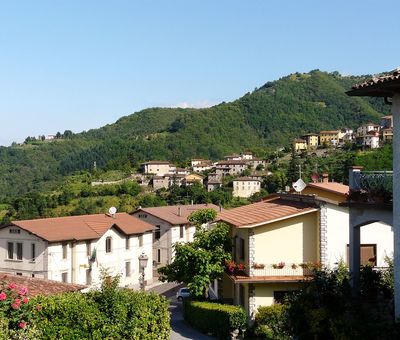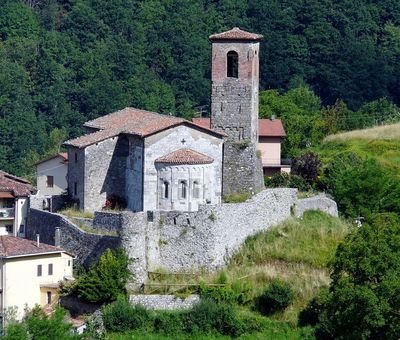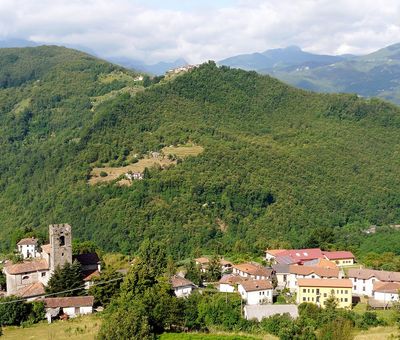A borderland
Perhaps the most emblematic image of a border is that of a bridge, a structure that divides and isolates. This has always been the way in Fosciandora, the small village that is typical of those found in Garfagnana. Even today, after following the Serchio river to reach the town, we must cross the Ceserana Bridge, then take steep streets and the scattered man-made terraces built over the centuries, eventually leading us to the village. Fosciandora seems to always have been a borderland; between Garfagnana and Lucchesia, between the neighboring municipalities of Massa, Lucca and Pisa in Tuscany but also on the Emilia side with Ferrara and Modena. Fortifications and outposts are evidence of the many disputes for the territory over centuries, and are still visible today.
Only river rocks
Only stones from the river – that is what the builders wanted for the Rocca di Ceserana. The stones came from the nearby Serchio river to build this overhanging fortress. Built in the Middle Ages between the 13th and 14th centuries, it was an important refuge during the wars. The almost vertical walls, the walkway for the patrol and the two towers clearly testify to its defensive role. Until the mid-1400s, it carried out its task very well, so much so that the Este family had it restructured to cope with the introduction of firearms that changed the way of fighting. It was abandoned during the 1500s and ended up in the hands of a band of brigands who used it as a base for their raids across the border.
From the Highlands to the Serchio Valley
A Scottish artist chose to live in the village that over the centuries was both a frontier and borderland. Sir John Bellany chose one of the hamlets of Fosciandora as his home, developing a strong bond with the local community. The municipality awarded him honorary citizenship in 2002 and the town council chamber displays two paintings by Bellany, considered the most important contemporary Scottish painter. In his earlier works, he was attracted to the landscapes and colours of the Scottish Highlands, subsequently his later works were inspired by the hills of the Serchio Valley. At his funeral held in the Cathedral of St. Giles in Edinburgh in 2013, his years in Garfagnana were emotionally remembered.







